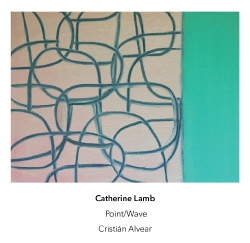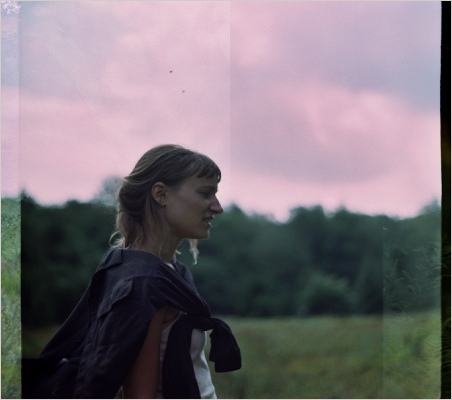Another Timbre TimHarrisonbre

at142 Catherine Lamb ‘Point/Wave’ (2015) 37:30
An extended work for solo guitar with electronics, written for and played by Cristián Alvear.
Interview with Catherine Lamb
How did 'Point/Wave' come about, and had you composed for guitar before?
In 2013 or 14 Cristián had approached me to write a guitar piece for a project he was doing in Chile. I was (am) very touched by his playing. I had composed for guitar as a teenager (which I won’t share). My uncle was (is) a very serious and knowledgeable classical guitarist (though he never performs in public as far as I know), so I was around a lot of inspired thinking around the guitar and its (mostly lute) repertoire and approaches. When I started to work with particular harmonic space around 2004 I must admit I found the guitar to be rather frustrating as I could never keep it in tune, I think I am forever trying to tune one whenever there is one lying around! I have included re-tuned electric guitars with e-bows in various pieces (perhaps inspired by Michael Pisaro’s approach), limited to partial playing, and I have a pedal steel piece for instance. However, Point/Wave truly is the first piece I have specifically written for acoustic guitar (as a more mature composer that is). When I wrote it I thought that it could benefit from the extra sonority/decay and harmonic clarity of the steel string, however Cristián has proved its potential on the classical guitar!
How do the electronics in the piece work?
It is the first piece which approaches the concept of the Secondary Rainbow Synthesizer, which later exists in my series of nine pieces Prisma Interius. The concept extends from an installation piece Secondary Rainbow Bryan Eubanks and I were collaborating on together in 2014, where we set up live microphones and filtered them directly with resonant band pass filters.
Here in Point/Wave there is an infinite cycle of four “environmental chords” which overlap with one another. The algorithm has a variable potential so that it is always a slightly differing duration of those overlaps. I called the chords threes, sevens, elevens, and thirty-ones, having to do with their respective prime emphasis. So there is always the potential to correspond with the happening chord in the guitar part, but sometimes it needs to continue to cycle before you have the sympathetic correlation in a given moment, or between the two parts is another kind of overlay. In the part of the guitar, the cycling is also potentially infinite…
he environmental chords function more as augmentation to the points/decay the guitar is articulating at a given moment. The guitarist is asked to place the points in a manner in which they are allowed to rise and fall with the wave of collected points, so that there is always an overlapping of their interactions. The rise and fall regarding what happens to be occurring in the surrounding environment itself as well as the resonance factor of each sounding chord.
To be continued
